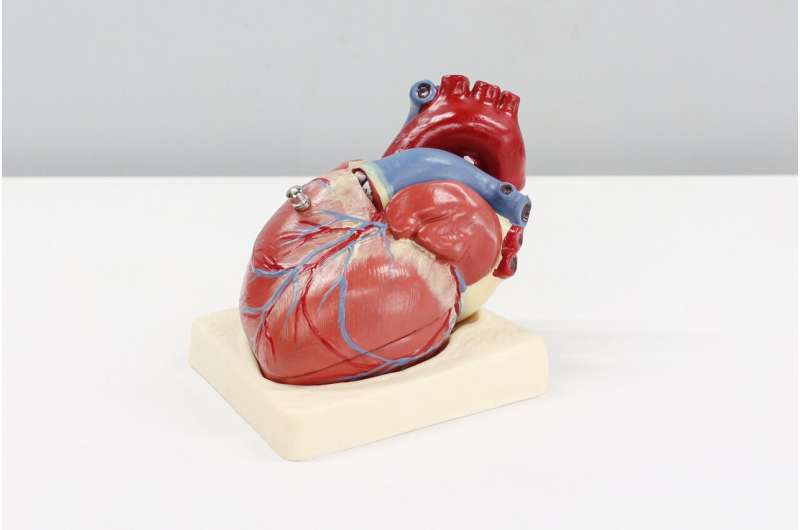Low physical function after age 65 associated with future cardiovascular disease

Among people older than age 65 who were assessed using a short physical function test, having lower physical function was independently associated with a greater risk of developing heart attack, heart failure and stroke, according to new research published today in the Journal of the American Heart Association.
The Short Physical Performance Battery (SPPB) used in this study is considered a measure of physical function, which includes walking speed, leg strength and balance. This study examined physical function, which is different from physical fitness.
“While traditional cardiovascular disease risk factors such as high blood pressure, high cholesterol, smoking or diabetes are closely linked to cardiovascular disease, particularly in middle-aged people, we also know these factors may not be as predictive in older adults, so we need to identify nontraditional predictors for older adults,” said study senior author Kunihiro Matsushita, M.D., Ph.D., an associate professor in the department of epidemiology at the Johns Hopkins Bloomberg School of Public Health and the Division of Cardiology at the Johns Hopkins School of Medicine in Baltimore. “We found that physical function in older adults predicts future cardiovascular disease beyond traditional heart disease risk factors, regardless of whether an individual has a history of cardiovascular disease.”
The Atherosclerosis Risk in Communities (ARIC) study, an ongoing community-based cohort enrolled 15,792 participants, ages 45-64 years from 1987-1989, to investigate the causes for atherosclerotic disease (plaque or fatty buildup in the arteries). Yearly and semi-yearly (beginning in 2012) check-ins included phone calls and in-person clinic exams.
The present study evaluated health data from ARIC visit 5 (2011-2013; all participants were older than age 65) as a baseline, when the SPPB physical function test was first collected. The SPPB measured physical function to produce a score according to walking speed, speed of rising from a chair without using your hands and standing balance.
Researchers analyzed health data for 5,570 adults (58% women; 78% white adults; 22% Black adults), average age of 75 from 2011 to 2019. Using SPPB scores, the physical function of the participants was categorized into three groups: low, intermediate and high, based on their test performance.
Researchers examined the association of SPPB scores with future heart attack, stroke and heart failure, as well as the composite of the three, adjusting for major cardiovascular disease risk factors, such as high blood pressure, smoking, high cholesterol, diabetes and history of cardiovascular disease.
The study found:
- Among all participants, 13% had low, 30% had intermediate and 57% had high physical function scores.
- During the 8 years of the study, there were 930 participants with one or more confirmed cardiovascular events: 386 diagnosed with heart attack, 251 who had a stroke and 529 heart failure cases.
- Compared to adults with high physical function scores, those with low physical function scores were 47% more likely to experience at least one cardiovascular disease event, and those with intermediate physical function scores had a 25% higher risk of having at least one cardiovascular disease event.
- The association between physical function and cardiovascular disease remained after controlling for traditional cardiovascular disease risk factors such as age, high blood pressure, high cholesterol and diabetes.
- The physical function score improved the risk prediction of cardiovascular disease outcomes beyond traditional cardiovascular risk factors regardless of whether individuals had a history of cardiovascular disease or were healthy.
“Our findings highlight the value of assessing the physical function level of older adults in clinical practice,” said study lead author Xiao Hu, M.H.S., a research data coordinator in the department of epidemiology at the Johns Hopkins Bloomberg School of Public Health. “In addition to heart health, older adults are at higher risk for falls and disability. The assessment of physical function may also inform the risk of these concerning conditions in older adults.”
Falls and fear of falling in older adults are major health issues, and they are associated with high injury rates, high medical care costs and significant impact on quality of life. A 2022 American Heart Association scientific statement, Preventing and managing falls in adults with cardiovascular disease, advises medication adjustments, reassessing treatment plans, considering non-drug treatment options and properly managing heart rhythm disorders to reduce fall risks among elderly adults.
“Our study adds additional evidence to past research, which has demonstrated the importance of maintaining physical function at an older age,” Matsushita said. “The next questions are: what is the best way for older adults to maintain physical function, and whether interventions that improve physical function can reduce cardiovascular disease risk?”
The study had several limitations. The study population included only white and Black adults but did not include people from other racial or ethnic groups (ARIC began enrollment in 1985, when participation among people from diverse racial and ethnic backgrounds was more limited). The study also didn’t account for individuals whose lack of mobility might prevent them from getting assessed at a research clinic. Additional research will be required to confirm the findings in people from more diverse racial and ethnic groups and people who have even less physical function.
Source: Read Full Article
